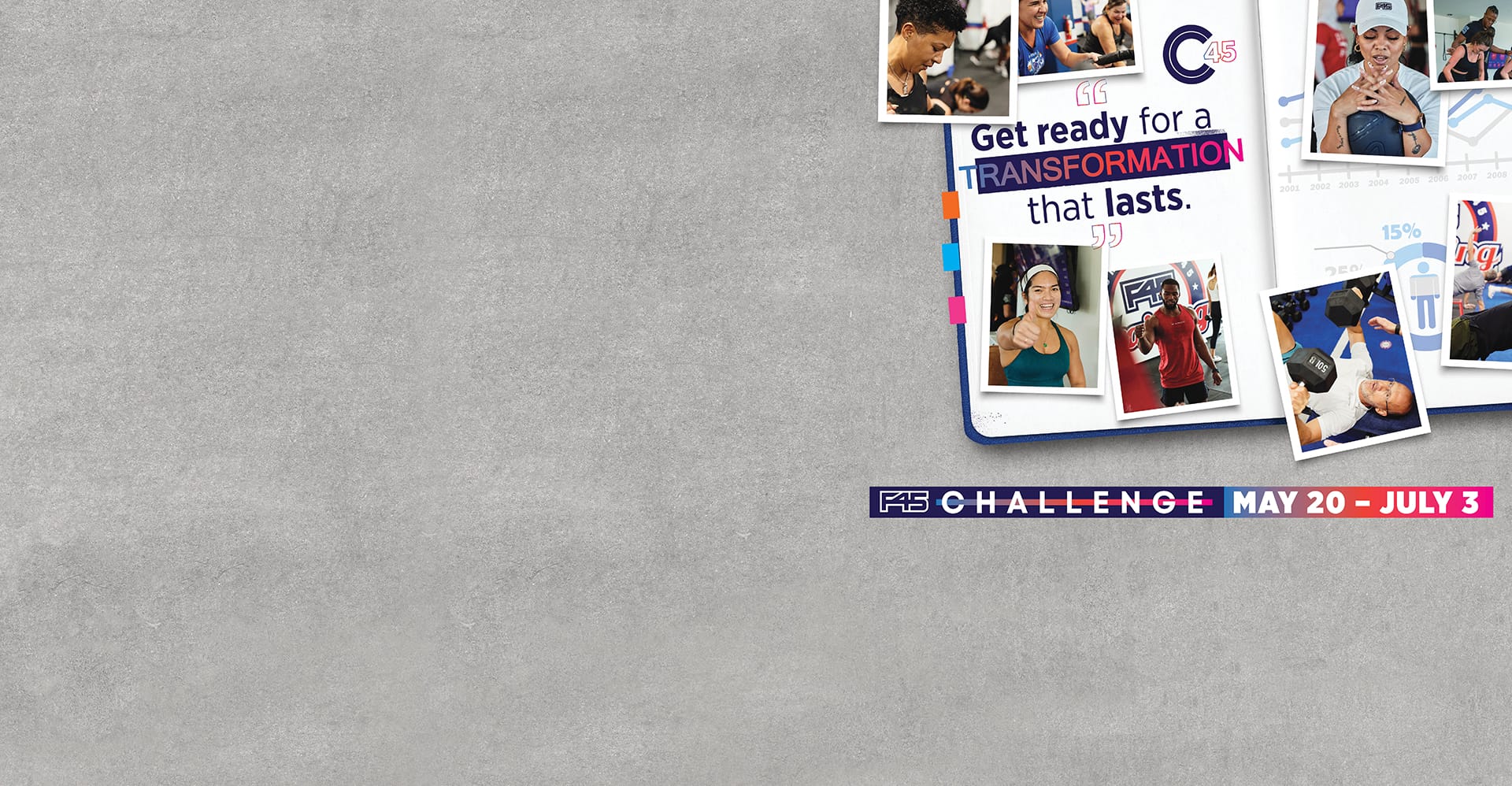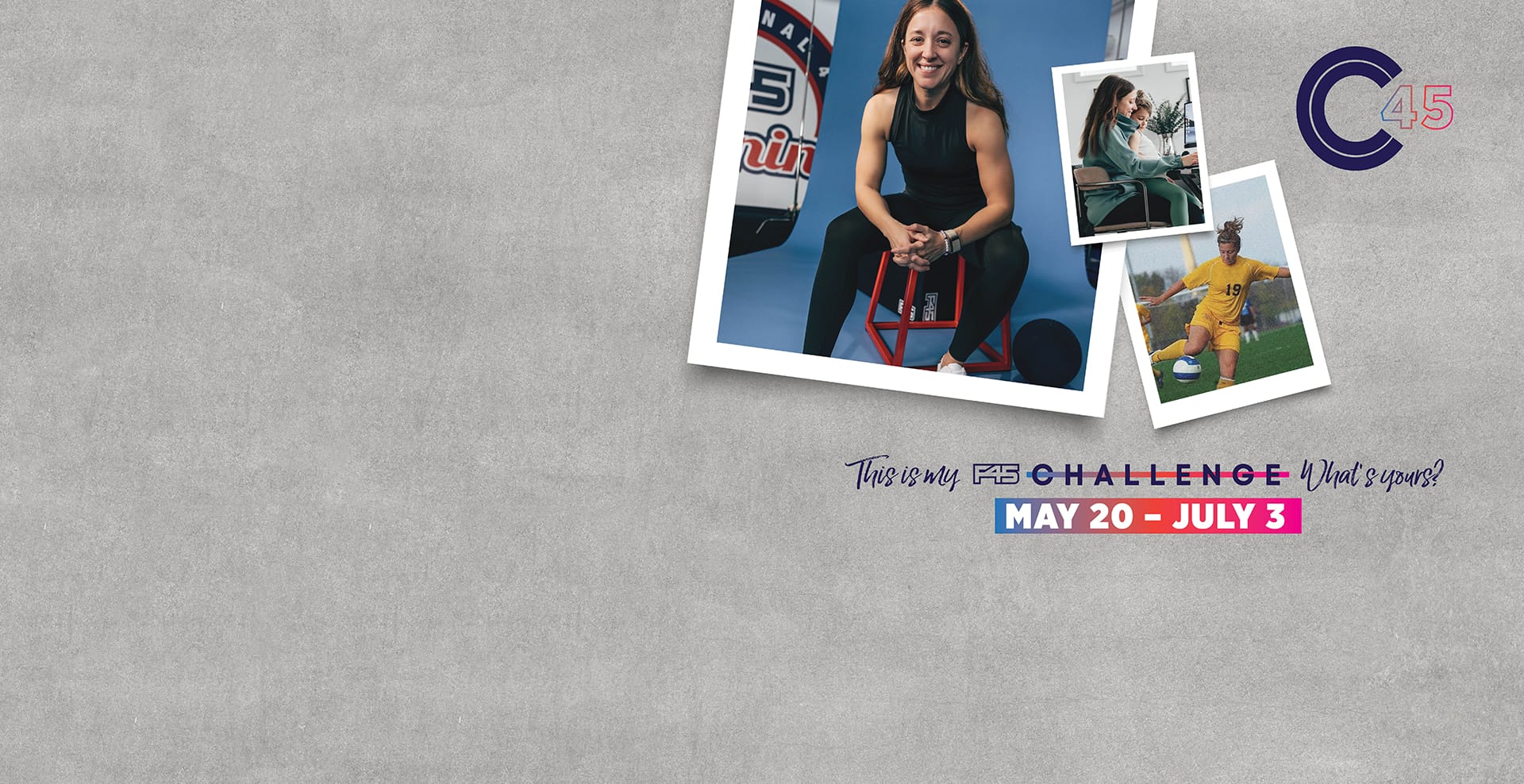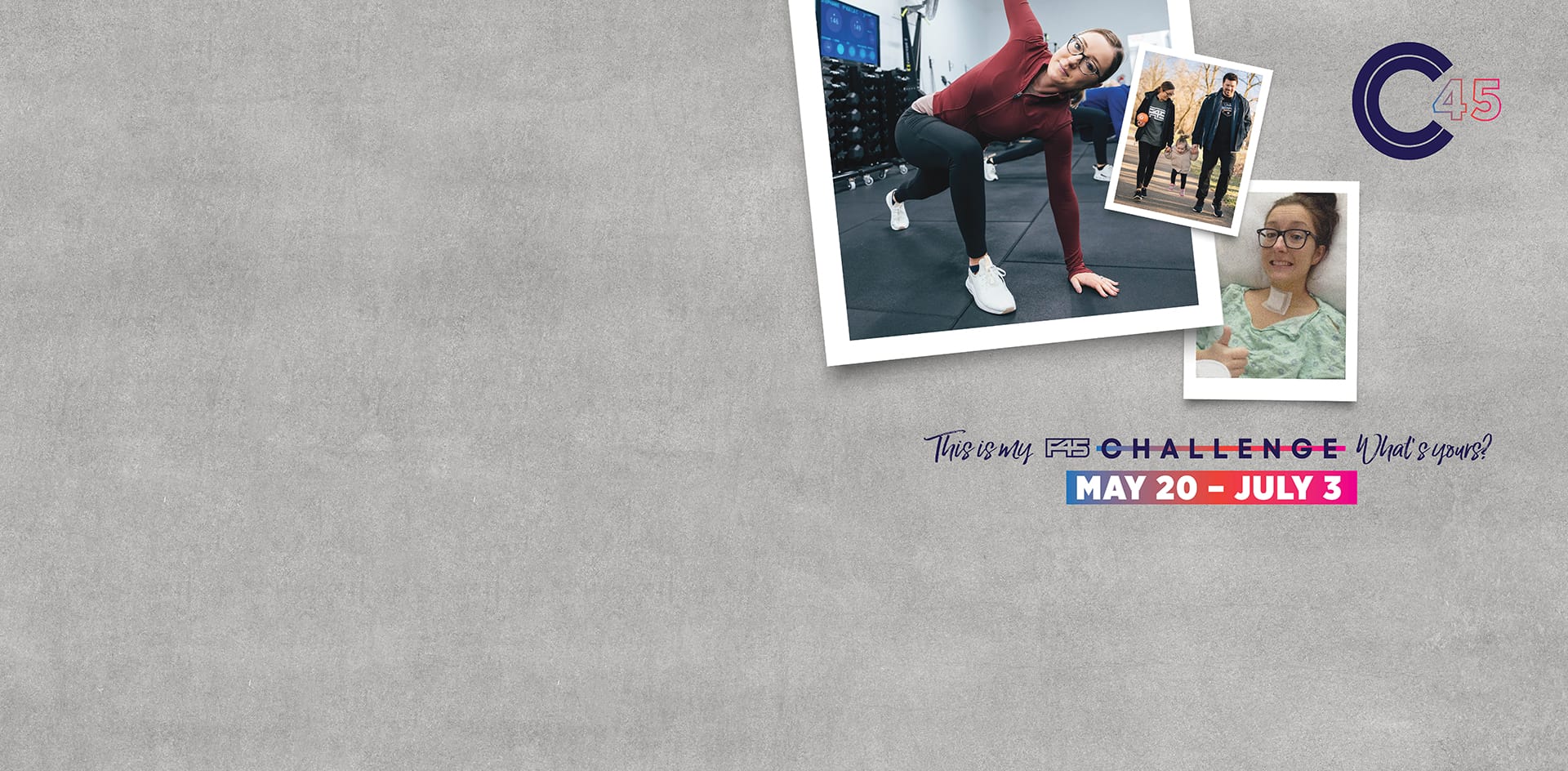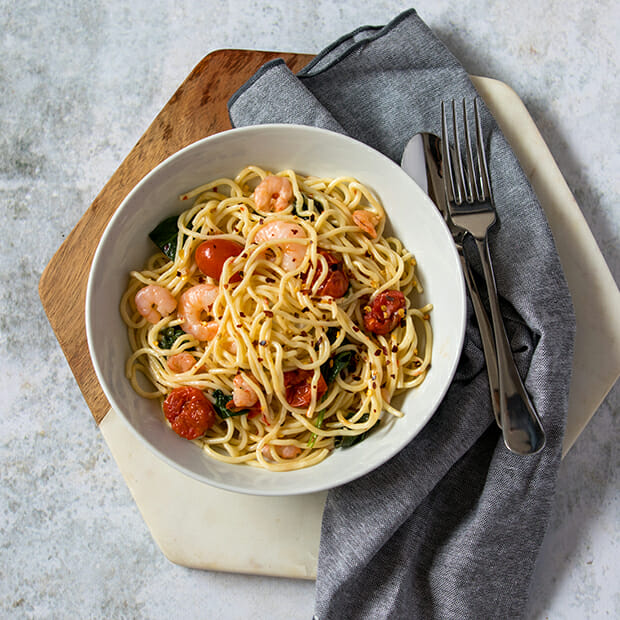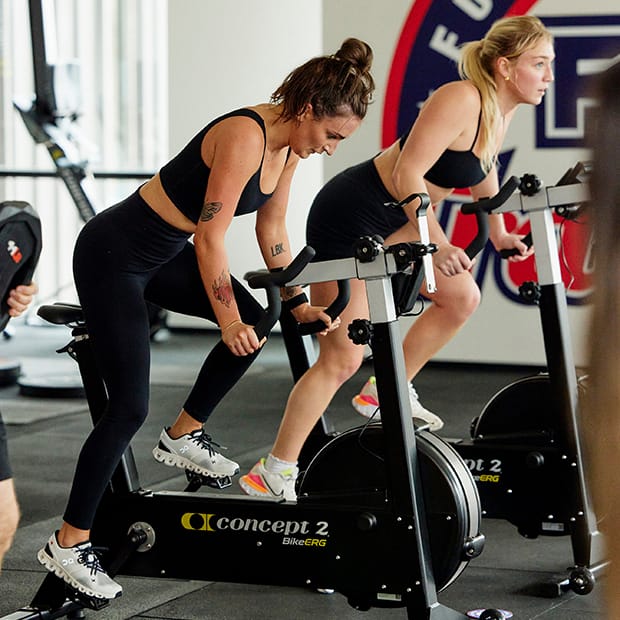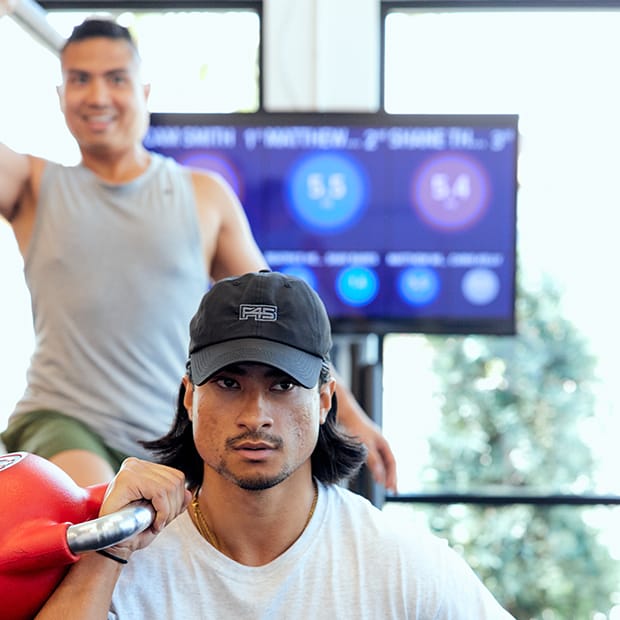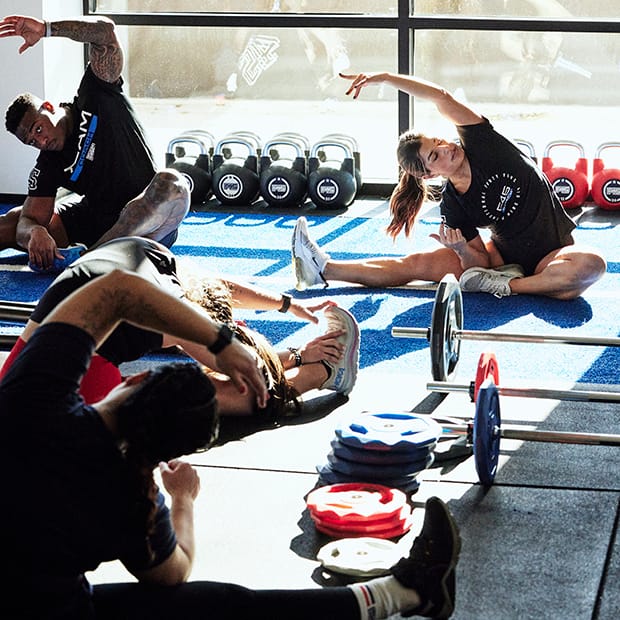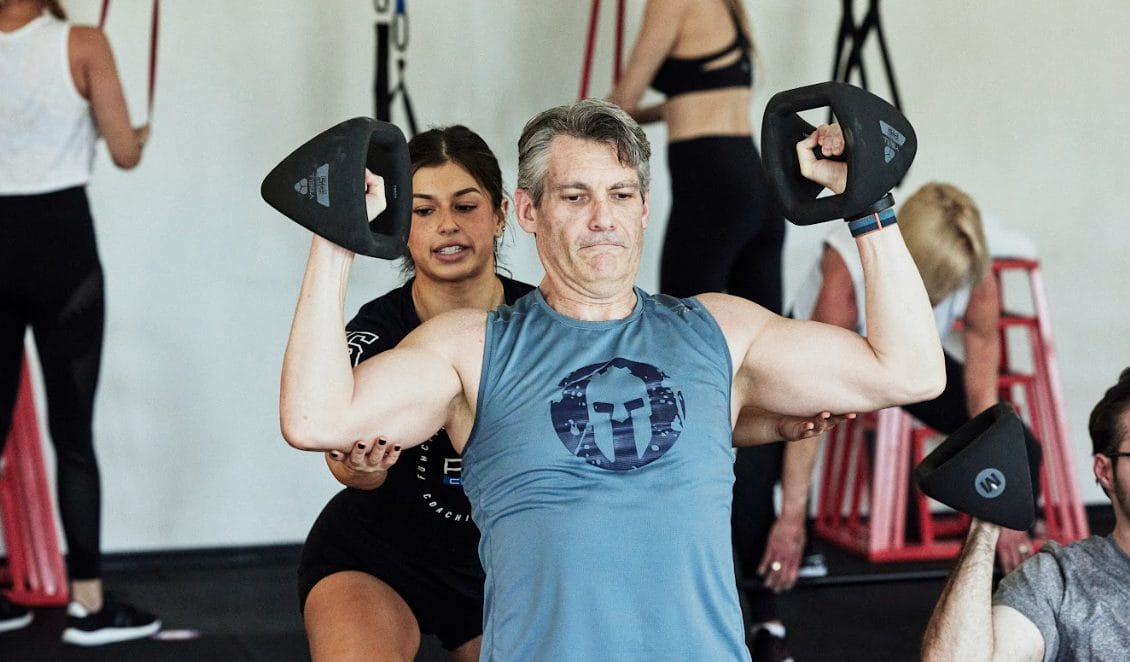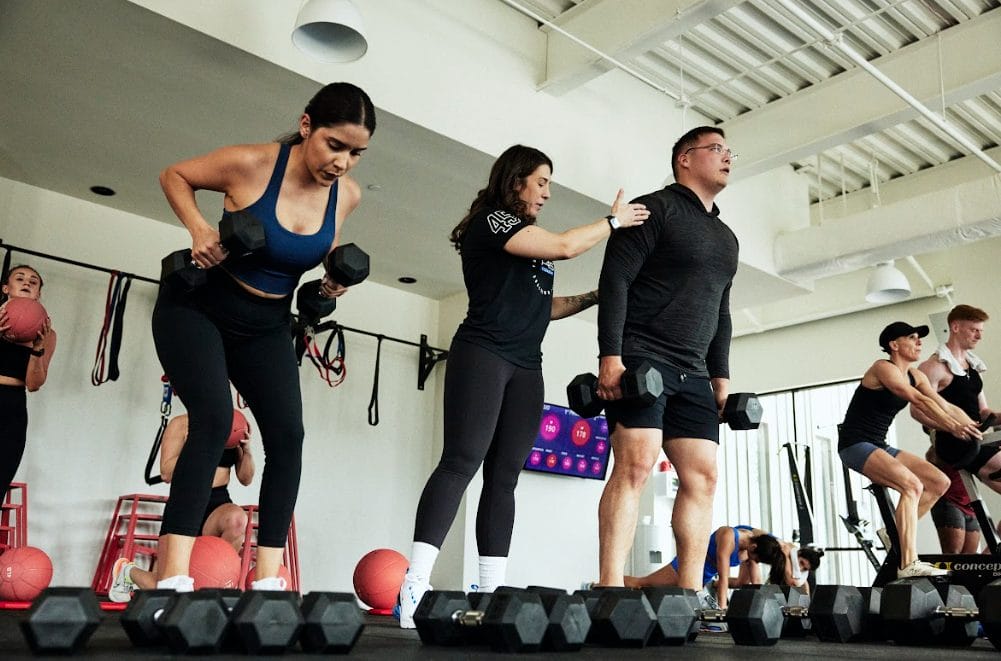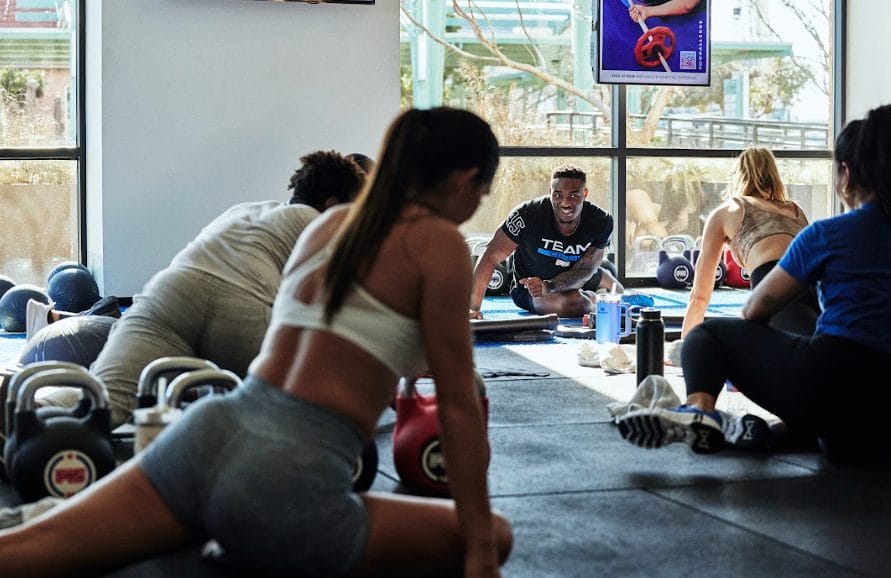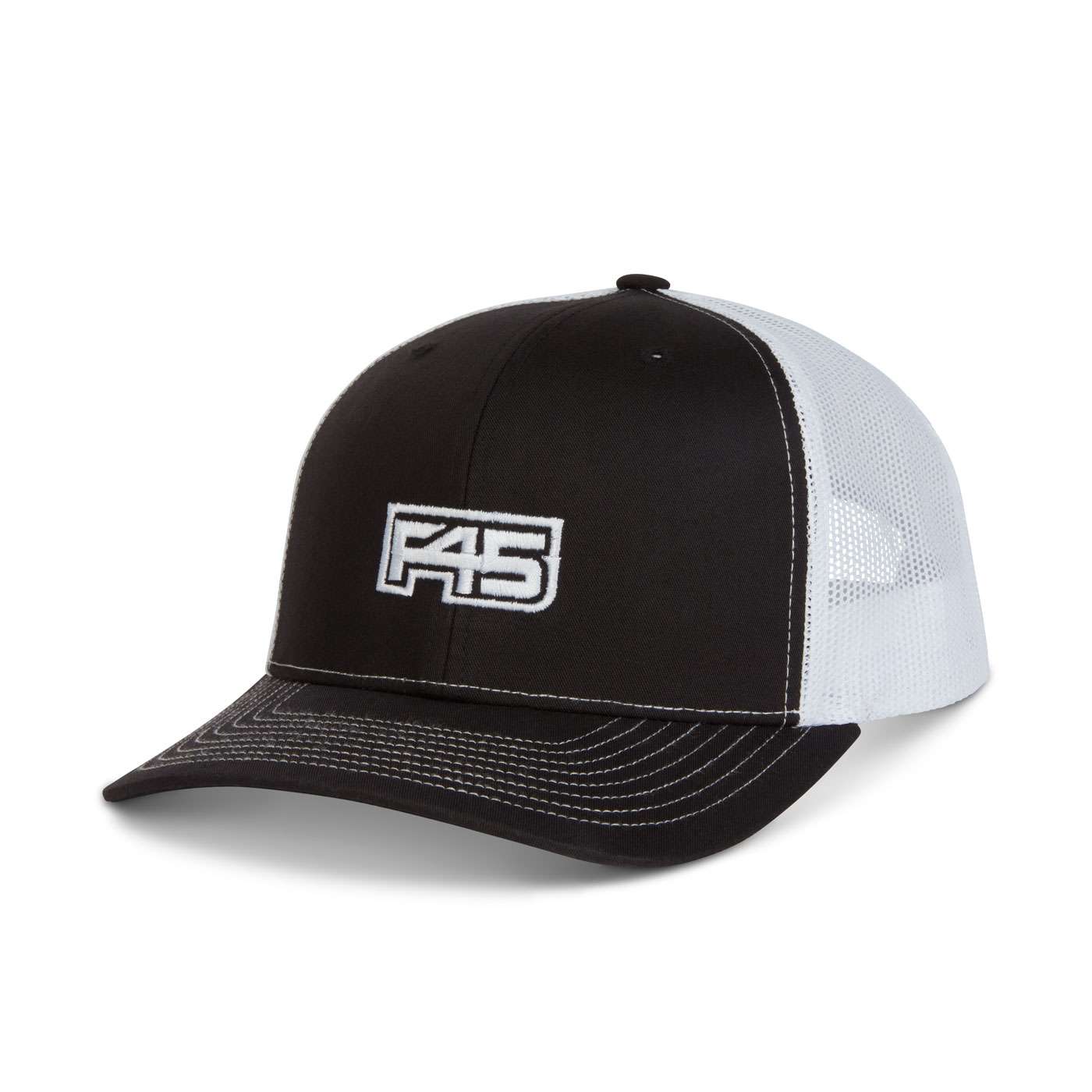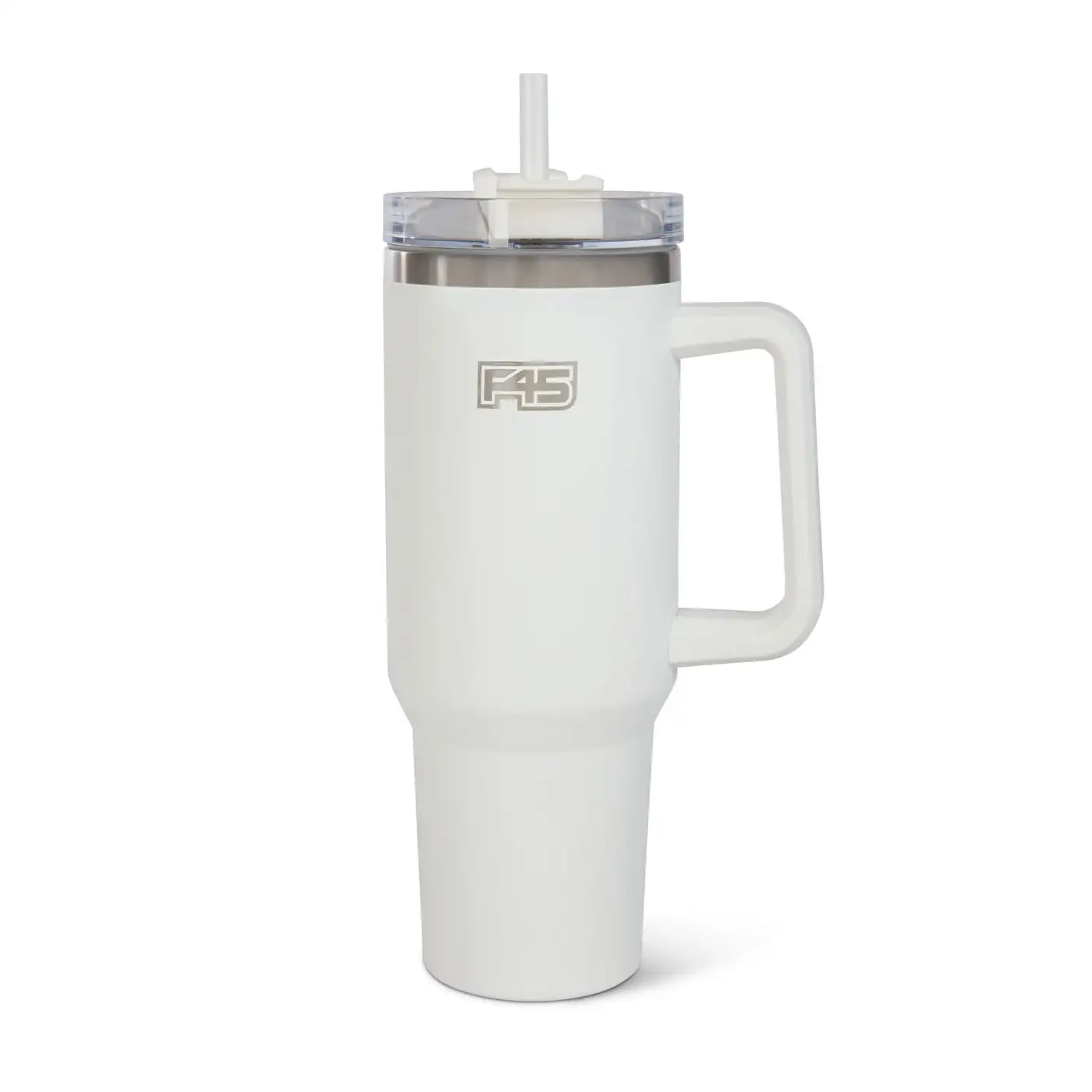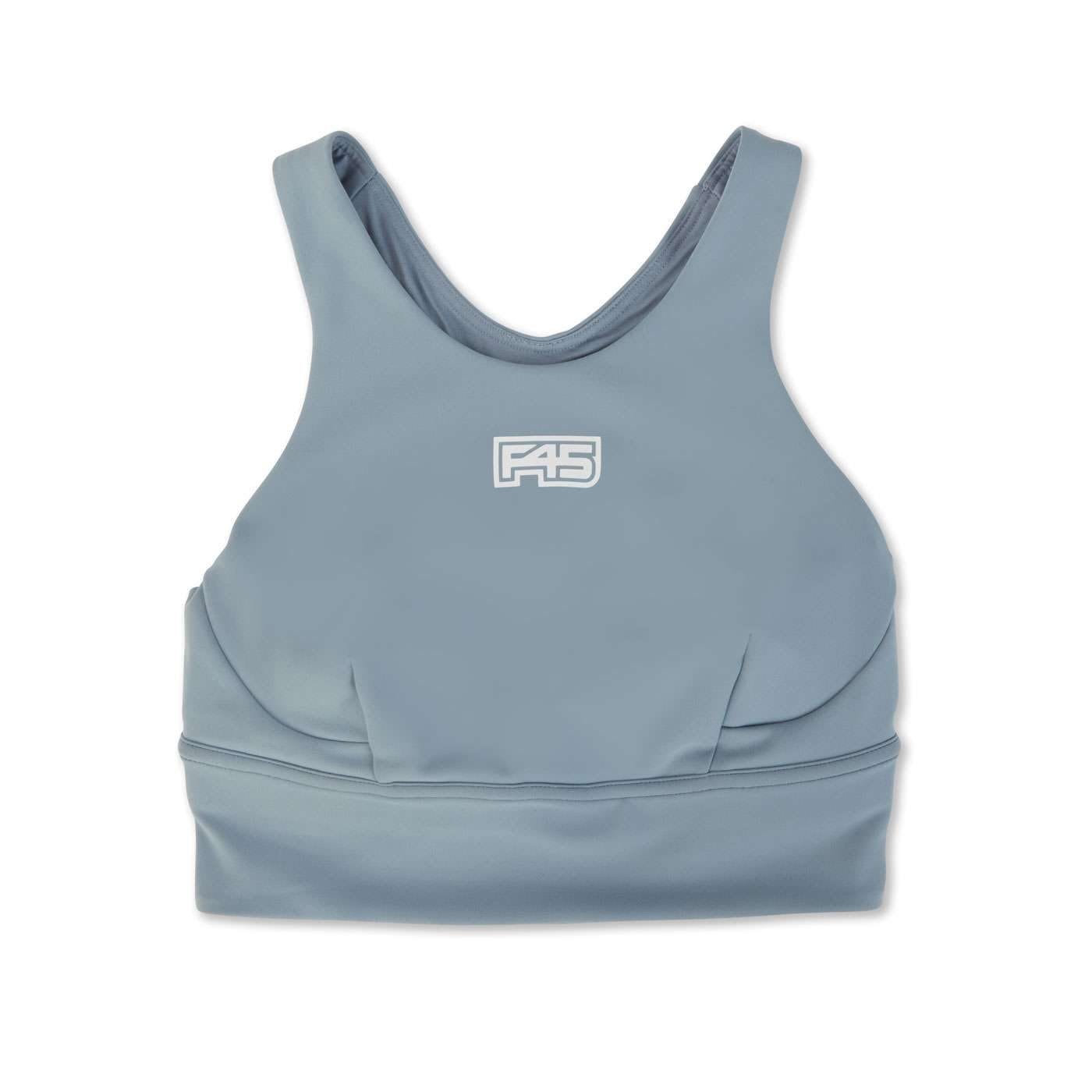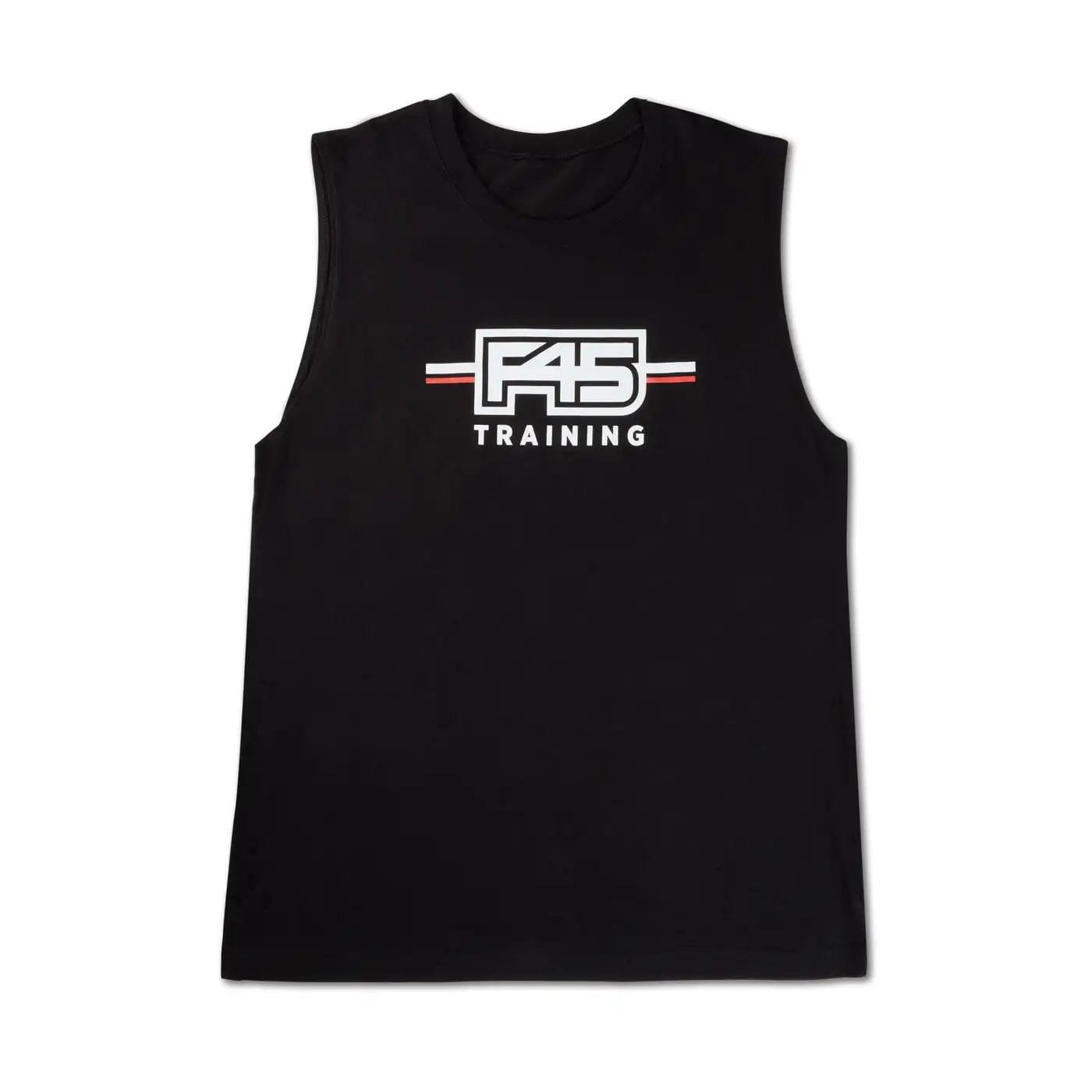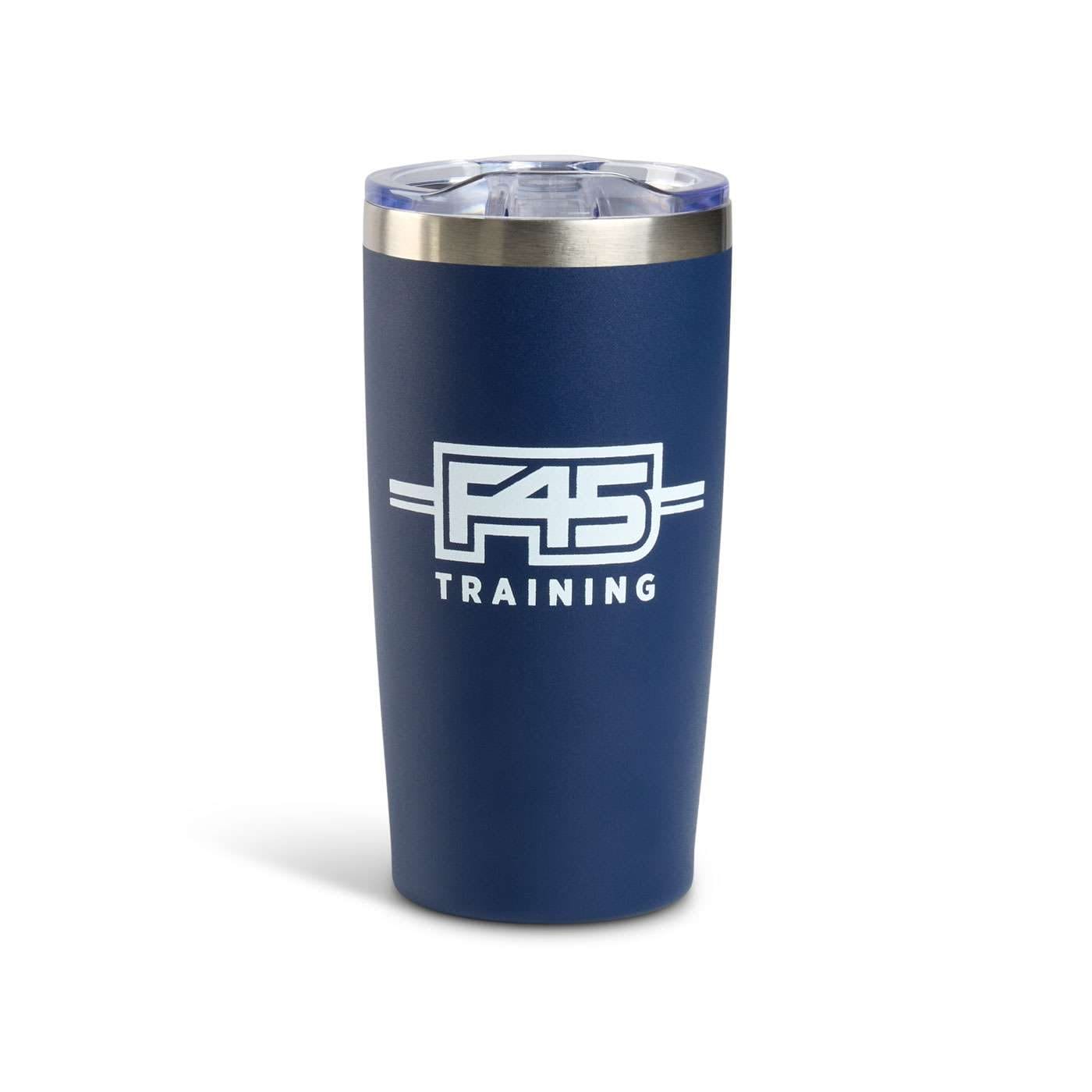HOW IT WORKS
Through this expert-curated program you’ll experience 45 days of industry leading fitness, nutrition, and lifestyle wellness personalized to your unique needs and goals. With our nutrient-dense meal plans, classic F45 team training, supportive community, and wellness guidance the F45 Challenge goes deeper, giving members sustainable tools to transform for a lifetime.
Through this expert-curated program you’ll experience 45 days of industry leading fitness, nutrition, and lifestyle wellness personalized to your unique needs and goals. With our nutrient-dense meal plans, classic F45 team training, supportive community, and wellness guidance the F45 Challenge goes deeper, giving members sustainable tools to transform for a lifetime.
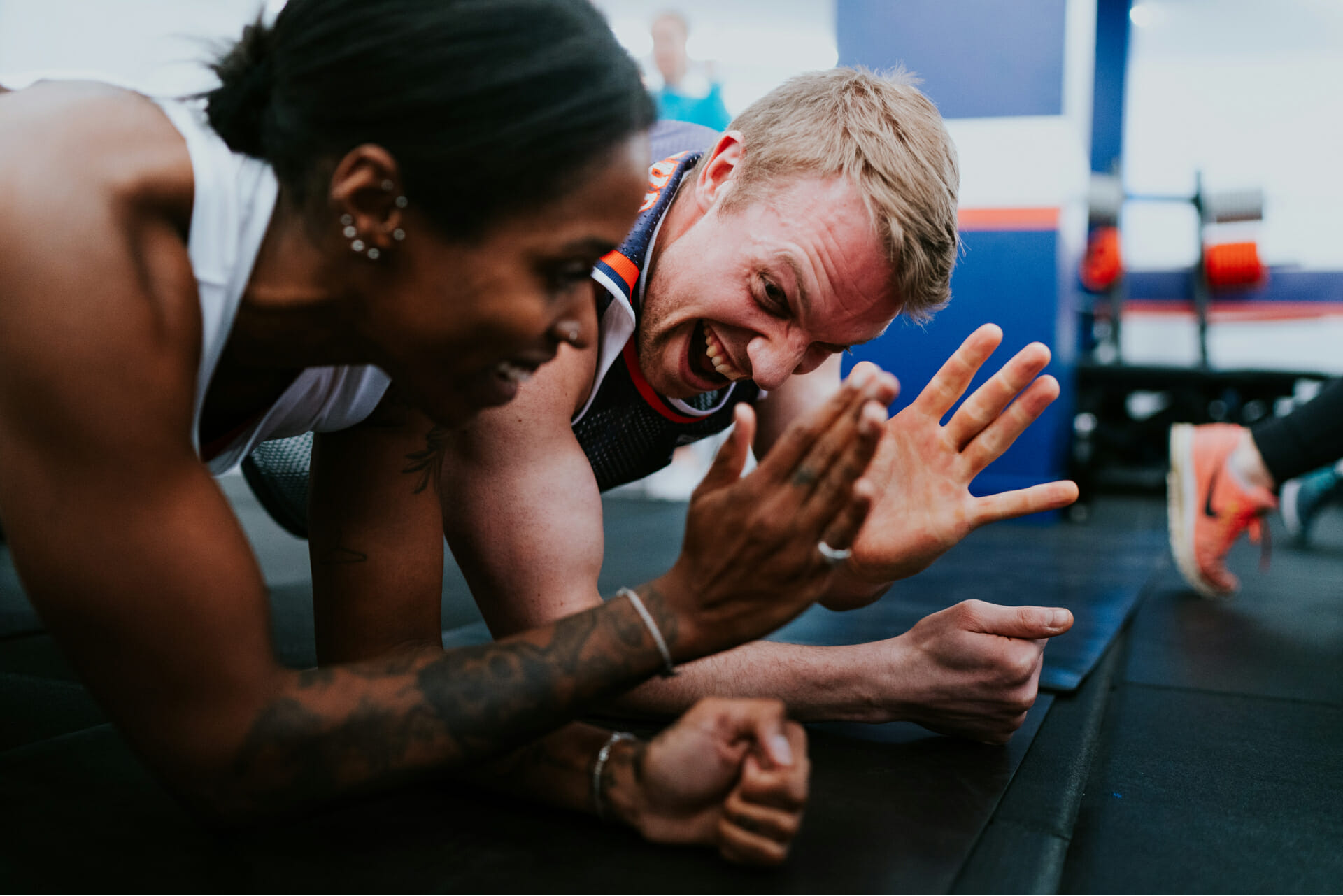

2024 DATES
FEB 5 – MAR 20
MAY 20 – JUL 3
OCT 7 – NOV 20
FREQUENTLY ASKED QUESTIONS
A guided 45-day program focused on your personal fitness and performance progress through F45’s team training and goal-targeted nutrition. The 45 Day Challenge is designed to provide you with the core knowledge and application of a sustainable healthy lifestyle while improving your overall health and wellness. The F45 community is here to support you over this 45-day journey, so get excited about setting personalized goals, building connections, and discovering your capacity through this fitness & wellness transformation. A few things to look forward to:
- Functional training from world-class trainers
- Daily customized meal plans with auto-generated shopping lists
- Macro-balanced recipes including mainstream, vegan and vegetarian options
- Fitness tracking, progress monitoring and nutrition guidance
You may download the Training app at no cost, however, to be a part of the Challenge in-studio experience you will need to contact your local F45 studio to discuss pricing options. To find your local F45 Studio go to: https://f45training.com/find-a-studio
- Monday May 20, 2024 – Wednesday July 3, 2024
- Monday October 7, 2024 – Wednesday November 20, 2024
Accountability and consistency are everything when it comes to achieving long-term results. Participating in Challenge makes it easy to stay accountable as you’ll be able to track your training progress from one Challenge to the next while gaining a clear understanding of the role nutrition plays in achieving goal-targeted, sustainable results. Secondly, it’s easier to push through comfort zones when you have the support of friends and coaches. Joining Challenge means you’ll become a part of F45’s supportive, team-training community. Gaining the support of other Challenge participants not only makes it easier to stay accountable but it can help you gain the confidence to push yourself to a greater level of performance than you would on your own.
To register for the F45 Challenge, visit www.f45challenge.com select > Sign Up and complete your Challenge profile. You can also register via the F45 Training app (iOS & android), just visit the app store and download F45 CHALLENGE at no cost. Once you’ve completed your Challenge registration profile you’re all set to check in for the upcoming Challenge.
If you are not an F45 member, you may still download and access the F45 Challenge mobile app which contains meal plans, recipes, educational articles and videos to support you with your health and fitness goals. To gain access to the F45 On-demand workouts, you will need to be an active member of an F45 studio.
It is highly recommended to participate in-studio throughout Challenge when looking to achieve long-term results. Contact your local F45 studio to find out about their membership options.
If you have forgotten your password, please select “forgot password” under the login box, and an email will be sent to your inbox to create a new password.
Pre-Challenge ‘before’ photos must be submitted or uploaded to the app either the day before/the day of Challenge day 1. Post-Challenge ‘after’ photos must be submitted/uploaded on the final day of Challenge. A guide to taking before & after photos:
- photos must be in front of a plain background (a white wall is best) they should have bright lighting, no shadowing
- they should be taken at eye level & show members standing upright
- participants should be looking forward at the camera with good posture & arms at sides with feet shoulder-width apart.
- avoid posing, lifting arms, flexing or sucking in the stomach in your photos
- Selfies are not accepted
- photos should not have any editing, retouching, photoshopping or filters applied.
Members must provide written approval (via email is sufficient) for images to be shared in the press, social media platforms and F45 global marketing collateral.
Challenge Inclusivity: F45 HQ understands that we have a diverse group of F45’ers worldwide participating in the Challenge. We want to ensure everyone feels included, and we acknowledge that the requirements set out for photos may conflict with personal or religious beliefs. As such, we allow the following exceptions to the photo requirements:
- Headscarves, burqas, hijabs or similar
- Fully clothed, including full length (preferably tighter) clothing to show transformation;
- Showing some skin, wearing tight leggings or tight shorts and tops
After downloading the Training app, you will be prompted to complete your profile by selecting a Challenge goal and answering a few questions about your activity level. You will automatically receive your goal-targeted daily calorie intake after completing these questions.
The F45 Training App automatically calculates your recommended daily calorie intake based on age, BMR, activity levels, and Challenge goal (lose weight, maintain weight, or build muscle). The app contains an algorithm that will adjust your daily meal plan to a specific calorie zone within ~100-200 calories of your recommended daily calorie target. This calorie zone algorithm uses a combination of 4 different meal sizes: small, medium, large and extra-large.
Individuals have varying nutritional needs, particularly overall energy needs based on gender, age, body weight, number of training sessions per day and activity outside of training sessions each day. It is expected that energy requirements may vary individually due to varying activity levels and baseline body composition metrics. activity. It is best practice to assess an individual’s energy needs for the purposes of 1) understanding daily energy requirements for overall health; and 2) determining a goal-targeted daily caloric intake for a particular fitness goal. The Mifflin St Jeor equation estimates total energy needs by estimating a person’s resting metabolic rate and multiplying that number by their activity level.
Absolutely! Between Challenges, you will have access to a sample meal plan and our robust recipe library with thousands of macro-balanced tasty recipes. All available in the EAT section of the F45 Training App.
If your body composition metrics have changed or if your weekly activity level has changed, we recommend entering these new metrics into the calorie guide during your next Challenge check-in period to continue obtaining an accurate reflection of goal-specific total daily calorie intake.
- Step 1: Log into the Training app
- Step 2: Select ‘Track’ along the bottom of the screen
- Step 3: Select ‘calorie guide’ at the top of the screen
- Step 4: Select ‘update your calorie guide’ to input your current weight and height > follow the steps to select a new goal > choose your meal preference and update your activity level (if needed). You can also manually input the BMR from your Inbody scan by selecting ‘Enter your own BMR’ and following the prompts.
Each recipe in the recipe library has four sizes–small, medium, large, and extra large; the average calories per size are listed below. Once you have selected your Challenge goal and received your daily calorie guide, the daily recipes in your meal plan will automatically reflect your recommended total daily calorie consumption. If you would like to modify your recipe meal size, you’ll first need to modify your calorie guide.
- Small = 350 calories
- Medium = 450 calories
- Large = 700 calories
- Extra Large = 900 calories
Fluid needs vary based on factors like age, sex, activity level, and overall health. For example, pregnant and breastfeeding mothers have higher water needs, while people with certain medical diagnoses like renal or heart disease have totally different fluid needs.
The AI (adequate intake) for water consumption has been determined for overall generally healthy people based on age and sex.
According to the Academy of Nutrition Dietetics, that looks like:
11.5 cups per day for women, and for men about 15.5 cups. These estimates, however, include fluids consumed from both foods and beverages, including water. You typically get about 20% of the water you need from the food you eat.
Those who are pregnant or breastfeeding have varying nutritional needs. We recommended consulting with your primary care physician about exercise and nutrition recommendations prior to registering for Challenge.
This is at the discretion of each F45 studio. Please contact your local F45 studio regarding Challenge prizing.
We recommend a ‘food-first’ approach. The Challenge custom meal plans are loaded with essential nutrients to support sustainable progress and long-term training adaptations. If you are concerned about nutrition deficiencies, you should speak with your primary healthcare professional to assess your individual dietary needs before starting a supplement protocol.
In the TRACK section of the Training app, select the STATS button at the top of the page. Click on either Update Weight & Waist or Update Body Measurements to modify your body composition metrics. You can also add a target goal measure for weight & waist.
In the TRACK section of the Training app, select the CALORIE GUIDE button at the top of the page. Scroll to the bottom of this page and click “Enter your own BMR.” Here you can enter your personal BMR value (Ie. from your InBody scan for example).
Physiological changes in body composition do not happen immediately as the body must first adapt to training load before changes in body composition can occur. Additionally, the rate at which these physiological adaptations occur (fat loss, lean muscle development) varies from person to person. Some participants may lose inches before losing weight (which may be indicative of a combination of fat loss and muscle gain). For this reason, weekly or bi-weekly weigh-ins in addition to before and after whole-body measurements will provide the most accurate assessment of total body composition changes.
The InBody scan is a noninvasive, easy-to-use method of assessing your body composition pre- and post-Challenge. InBody devices use an advanced form of bioelectrical impedance analysis (BIA) with a combination of direct segmental measurements and multi-frequencies to break down body composition. Participating in a pre and post Challenge InBody scan enables you to establish a baseline before Challenge and quantify your progress from one Challenge to the next. To maximize the accuracy of the InBody scan, F45HQ recommends the following:
- Complete your Pre and Post Challenge Inbody scan in the morning prior to training.
- Avoid eating/drinking just before their scan to avoid variance caused by shifts in body fluids.
- Wear similar clothing during Pre and Post scans and remove accessories/jewelry – lightweight, dense clothes not recommended.
If you have an intolerance or allergy to ingredients used in the meal plans, you can either adjust the recipe and swap out those ingredients, or swap in a different meal/snack of your choice from the Recipe Library. If the intolerance or allergy is to gluten or lactose, you can simply replace that ingredient for a gluten-free or lactose-free alternative.
Protein powder can be a great (and convenient) tool to assist with overall protein intake, but it isn’t always necessary! Overall, if you’re eating a varied and balanced diet, you are likely getting the protein and other nutrients you need from food alone.
If you are using a protein powder, make sure that it undergoes third party testing, like NSF certified products. Check out our official supplement partner for great protein powder options here.
It’s important to note how unique protein needs are and if you’re not sure how to determine your protein needs or want to make sure you’re consuming enough, reach out to your medical provider.
F45 recommends a balanced approach to nutrition including a variety of nutrients, vitamins, and minerals. The nutritional principles that underpin the F45 Challenge are evidence based and distinguish the F45 Challenge from unsustainable fad diets. We aim to equip our members with the knowledge and confidence to make positive and sustainable health changes during challenge and beyond.
There is no one size fits all approach to nutrition. It’s important to remember that nutrition and energy needs are individualized related to medical history, health status, goals, and more. It’s always recommended to consult with your MD and/or RD when making nutrition and/or lifestyle changes.
F45 advocates a positive relationship with food and no food group should be unnecessarily excluded (food allergies and certain medical diagnoses must be taken into consideration by the individual)
A wide variety of foods including protein, fat, carbohydrates & fiber, should be eaten every day. Having each of these components at (most) meals ensures satisfaction, allows the body to lean into its natural hunger/fullness cues, build body trust, and supports health and performance goals.
Cutting out your favorite foods isn’t sustainable and often leads to putting that off-limits food on a pedestal (only to desire it even more!).
Enjoy plenty of lean proteins, grains, healthy fats, and fruits/veggies, and limit (notice we aren’t saying cut out) saturated fats, added sugar, excess salt, and alcohol.
Erythritol (a type of sugar alcohol) shall be avoided due to evidence-based research that indicates risk of negative impacts on health when consumed.
CHECK OUT OUR ARTICLES
Learn more about what the F45 Challenge is all about.
Learn more about what the F45 Challenge is all about.
